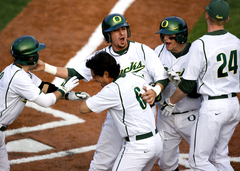
The Lineup
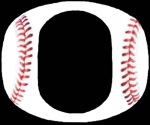
 The Starters
The Starters
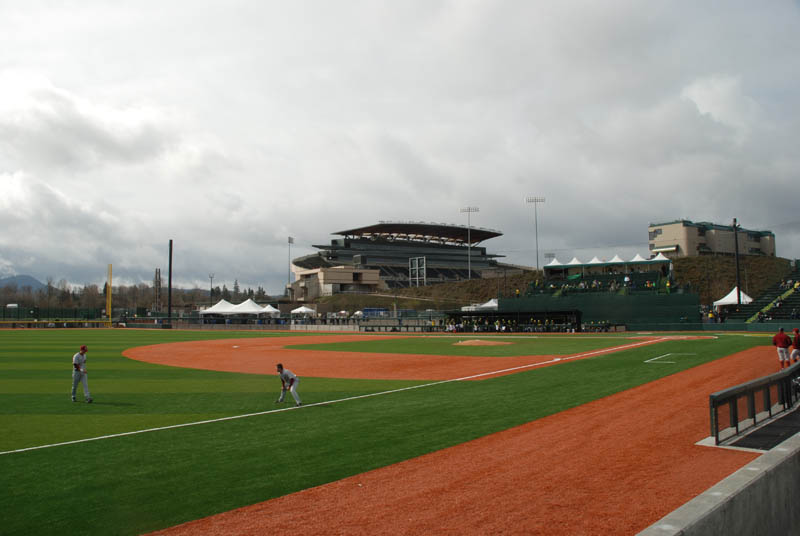 The Park
The Park
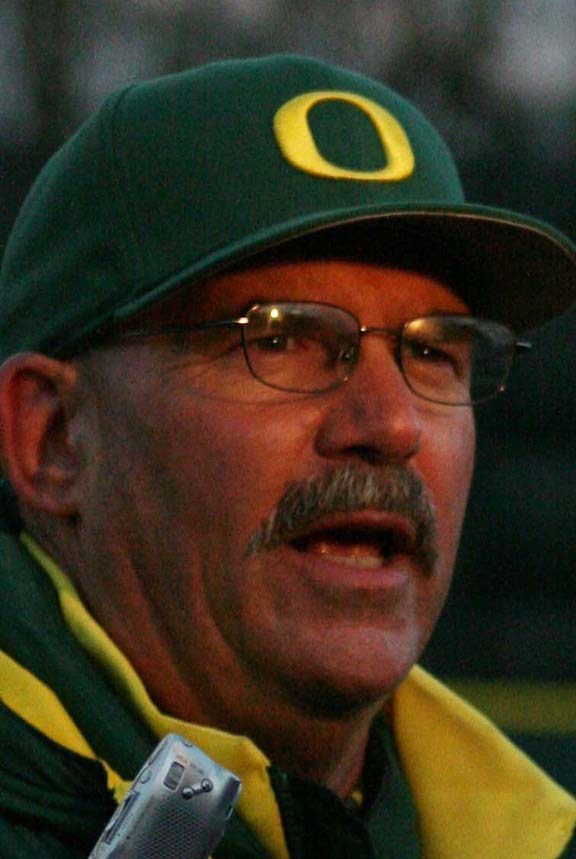 The Coach
The Coach
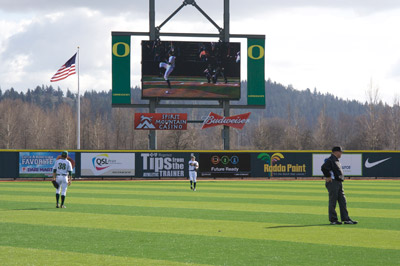 The Beginning
The Beginning
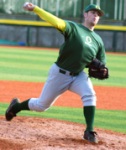 The Reliever
The Reliever
PK Park
Oregon Athletics' newest jewel
By WILLIE KELLEYThere is no chalk, no pre-game drawing of the batter's boxes. The umpire will never have to dust off home plate after a dramatic headfirst slide, and players won't come back to the dugout with grass stains or smears of dirt.
Even though the field and park might be different from the last team it hosted in the spring of 1982, PK Park is up and running. And looking good.
The playing surface is completely made up of Field Turf, an artificial playing surface that is also the same used on Rich Brooks Field inside Autzen. Senior associate athletic director Joe Giansante said in an email that synthetic is the new way to go for baseball fields.
"It is becoming more common in college baseball," Giansante said. "In fact, all the Northwest schools now have Field Turf infields and baselines."
The park sits impressively in the northwest corner of Autzen Stadium's parking lot. Phase I is complete and the University of Oregon has a baseball team for the first time in 28 years. With the expected park costs ranging from $12 million to $15 million and already slightly over budget, it is the most recent jewel in the increasingly shiny crown of Oregon athletics.
|
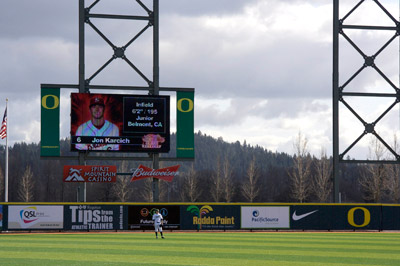 |
Other schools are taking note. The field's unique freshly mowed look with alternating shades of green in the infield and outfield has caught the eyes of programs around the country, Giansante said.
"I think we made good decisions on the aesthetics of the field. The infield grass alternating colors is something that had never been done before, and we are getting several calls from around the nation to try to figure out how we did it," he said in an email. "We had to have it manufactured that way in the plant."
Oregon State, the recent two-time national champion, also has Field Turf, and Head coach Pat Casey has said that the fake grass is a must in the rain-soaked Northwest.
"When you look at the whole picture - rain delays, not being able to practice outside, pulling the tarp and stopping games - this will allow us to guarantee teams we are going to play if they come here," he told Oregon State University's Daily Barometer in 2007 when the school put in its new field. "It will make for a smoother transition to the springtime, when we have rain."
Unlike OSU's field, which has regular grass in the outfield, PK Park is completely synthetic, making for a fast-draining field devoid of standing puddles of water even after a long spring soak. Traditionalists again need not fear: Giansante has insisted that the turf behave just like the old stuff for groundballs.
"(The turf) couldn't be better," he told the Register-Guard last month. "Everybody is thrilled with it. The guys love the surface. You can't tell it's not grass."
The park was coyly dubbed to honor major contributors to the project who happen to share the same initials: Pat Kilkenny, who gave a $4 million "leadership gift" for the park's construction, is one along with swoosh-bearing husband and wife team Phil and Penny Knight and their famous (and multiple) million-dollar donations to the school's athletic department.
The park measures 335 feet in left field, 400 feet to dead center and 325 feet in right field. Larry Gilbert, the project's construction leader from the architect firm Cameron, McCarthy, Gilbert & Scheibe, has called it "a pitcher's ball field." It took three games in the park's first series against defending national champion Fresno State before freshman outfielder Antony Kreitz hit the inaugural home run.
Approximately 2,392 watched that first home run, and Giansante said that, with the temporary bleachers as the park's only seating, PK Park tops out with a capacity of 2,747. When the home season finishes in late May, DLR Group will begin construction of Phase II.
|
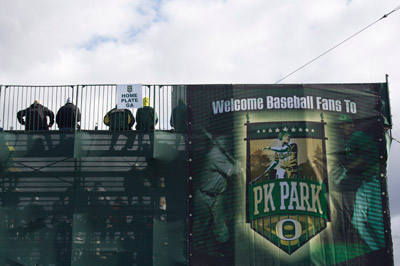 |
The first phase was centered on making sure the team could begin practicing on the field by February. Phase II will be on a similar timeline for 2010 as crews focus mainly on getting the permanent concrete seats complete, raising the park's capacity to 4,000. For now, fans will have to sit on metal bleachers erected by the same company that put up temporary seating for the Olympic Trials at Hayward Field last summer.
Next year's improvements will also place a roof over fans' heads in the new seating areas.
When the location of PK Park was announced, it meant that parking for football games would decrease by approximately 500 spots. Giansante said that although the athletic department "received several complaints," fans were going to adjust and get used to the new structure. The park is scheduled to hold pre-game festivities at football games next fall.
Giansante said the new park and baseball's return to Oregon was a necessity. With construction recently beginning on Matthew Knight Arena, the university is gradually keeping up with the rest of the country.
"We are finally catching up with everyone else," he said. "Our basketball (arena) was the second oldest on-campus arena, and we were woefully behind our peers in providing the student-athlete and fan experience our kids and fans should have."
"And in baseball, it says we no longer accept being the only team in the Pac-10 to not have a baseball program."
